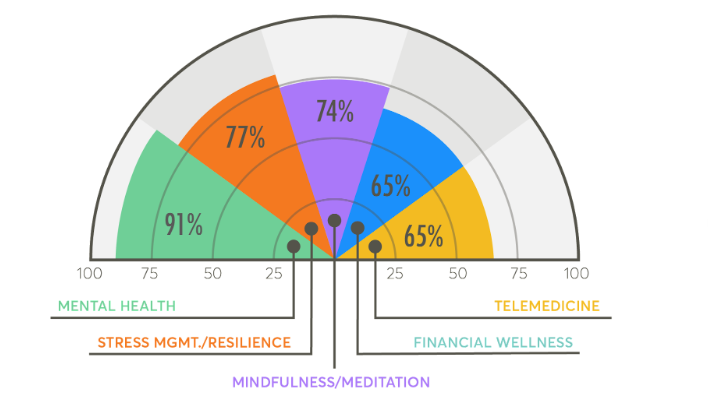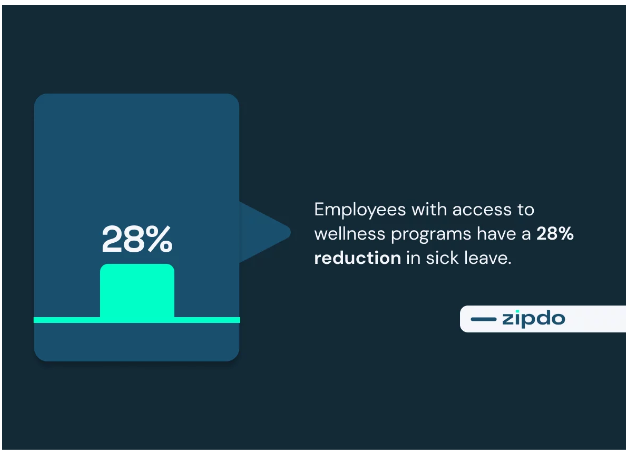6 Essential Components to Improve Your Workforce’s Well-Being
6 Essential Components to Improve Your Workforce’s Well-Being
Over the past few years, it has become more and more apparent that the mental and physical well-being of the workforce is critical for any organization to run smoothly and meet its full potential. Supporting employees’ physical and mental health will continue to be a key priority for organizations.
When staff are dissatisfied and employee turnover becomes an issue, improving employee well-being is a solid strategy to address the problem. This will involve numerous factors, which vary according to the industry, the pace of work, and the business activities.
If you want to develop a wellness program to support your workforce, improve productivity, and retain your top talent, this post will highlight six key components you can’t miss.
What Is Employee Well-Being?
Let’s start with the basics. Employee well-being is a concept that defines how an employee’s physical, emotional, and mental health are affected by workplace dynamics, and their resulting state of mind. Employee well-being involves five components:
- Social: Healthy, meaningful relationships in their personal lives and with colleagues
- Financial: The ability to successfully manage their personal finances
- Career: Being satisfied with their career development and daily responsibilities
- Physical: Having the health and energy for daily activities and completing tasks at work
- Community: Connecting with others and having a feeling of belonging to a community
Within these factors, we find many other aspects that influence employees’ well-being in the workplace. Security is one of these; in this digital era, we can’t overlook the importance of personal and digital safety. For instance, working with sensitive information can put extra stress on employees if the organization doesn’t carry out proper cybersecurity measures.
Having employees properly screened before hiring is another measure that contributes to everyone’s well-being. Performing effective background checks on both local and international employees can also help ensure a general feeling of confidence. Knowing who you work next to is critical to ensure safety and peace of mind for all employees.
Employers are responding to employees’ needs for well-being programs and support. In 2023, employers are focusing their well-being budgets on the following areas: mental health (91%), mindfulness and meditation (74%), and resilience (77%), according to a survey of consultants and wellness directors across the U.S. conducted by Wellable.

Employee Wellness Programs: Benefits and Challenges
Improving employee wellness is important to support employee performance, engagement, and resilience, and it’s been shown that organizations with successful wellness programs have reduced absenteeism and increased productivity.

However, there are challenges associated with implementing a wellness program in the workplace. Wellness initiatives usually start strong but become stale over time. If engagement wanes, the program may be abandoned due to cost-cutting measures, a lack of interest, or a lack of resources. Understanding the challenges you may face when building an employee wellness strategy is important to maximize its benefits.
Whether you choose to create internal policies and initiatives or opt for a third-party solution, here are the three most common challenges you may face:
-
Lack of Funds and Resources
A good program needs a budget for activities, materials, speakers, trainers, and sometimes, even an app. While you can outsource activities to third-party providers and memberships, a solid program needs the investment of company resources to encourage participation and results. Many organizations now have wellness directors or HR personnel dedicated to following up on program implementation.
How much should the budget be? This will depend on the extent of the program, of course, but it is worth noting that, according to a new study, employee health and well-being programs yielded an average of 47% ROI in 2022. These results don’t appear overnight, though. Most wellness programs take a few years to show results.
2. Poor Communication and Internal Support
As with every business program, it can take some time to get the ball rolling. While fitness and wellness-oriented employees—the runners, yogis, and power walkers—may be the most enthusiastic, the remaining majority is often slow to adopt these programs. This can often be because they don’t understand the initiative or what it can do for them.
However, it’s often the people who are slower to engage who can benefit most from the program. Whether there is a need for mental health supports, financial guidance, or physical fitness, management will play a major role in communicating the benefits of the program and encouraging employees to use it.
3. Loss of Interest From Employees
Often, wellness programs start with a lot of enthusiasm, followed by a fizzle. This situation often arises because of a poor alignment between the company’s offerings and the employees’ interests. Before investing, be sure to survey employees to discover their level of interest—and their needs. Not all offerings are attractive to all employees—a survey can help find out what employees would like to be included.
6 Ways to Improve Your Employees’ Well-Being
To create engagement and productivity in the workplace, it’s essential to build a company culture around respect, inclusion, and meeting people’s needs. Here are some tips to create a culture of well-being and support:
- Be Flexible in Their Work Agreements
A flexible work schedule goes a long way toward keeping employees happy. Achieving work-life balance is a major consideration for the workplace of this generation. While maintaining a steady workflow is important for productivity, managers must respect that not everybody works the same way, and people need time away from the office.
Employees value having control over their schedules and making time for personal activities, mental health days, and family events. As such, it’s critical to implement time-tracking systems that respect this flexibility.
2. Look Beyond the Paycheck—Your Culture Is Vital
When it comes to employee well-being, it’s not always about the money—your company culture plays a major role. Learn to identify any problem areas in your organization, such as toxic behavior, poor management, a lack of encouragement, or misalignment of workplace values.
Encourage an attitude of support and positivity. Achievements should be recognized and rewarded, both by management and peers. Appreciation spreads positivity and purpose in the workplace.
3. Make Onboarding Easy and Enjoyable for New Hires
Onboarding can be a stressful time for new hires. Streamline and simplify onboarding and training by ensuring the new team member has a chance to meet people and ask questions, and by allowing part of onboarding to be self-paced, with online materials. Assigning a mentor is another method that works well when it comes to easing employees into the company culture.
4. Motivate Employees With Team-Building Activities
Organizational culture is not only about work. To have an enthusiastic and motivated workforce, fun is essential. Organize team-building activities, such as hikes, amusement park visits, or a boat ride. Encourage healthy competition between teams and arrange social gatherings so people can get to know each other better. Include wellness activities like walks, yoga, or meditation for full benefits.
Employers benefit from building strong teams through improved efficiency, communication, and problem-solving.
5. Offer Mental Health Support
Employees dealing with anxiety or other mental health issues can struggle at work—or miss work altogether. That’s why supporting your employees’ mental health is critical for your bottom line. According to the World Health Organization, depression and anxiety cost the global economy $1 trillion annually in lost productivity.
Organizations should incorporate mental health support into their well-being programs, such as training managers to identify signs of emotional distress in staff. Another effective initiative could be to implement a mental health support program, where employees can reach out for help if they are feeling overwhelmed. Finally, encouraging employees to take personal days when needed can also reduce burnout and absenteeism.
6. Encourage Mindfulness
Mindfulness is a habit that helps people reside in the present moment and focus on their current activities while regulating their emotions. There are several exercises teams can practice to adopt that habit, such as yoga and guided meditation. The company can also designate a room or a pleasant outdoor space for people to have quiet, contemplative time.
How Can You Build an Effective Well-Being Initiative?
The first step in creating a policy and work culture that supports employee wellness should be to consider your employee’s needs, either by asking for input directly or by conducting a survey. Paying attention and identifying potential problems like overwork, burnout, and work-life imbalance can help managers know when to offer support. Finally, choosing practices and supports that match your company’s budget and also meet the needs of your workers is the key to creating a company culture of harmony and productivity.
Author Bio
Dean Mathews is the founder and CEO of OnTheClock, an employee time tracking app that helps over 15,000 companies all around the world track time.
Dean has over 20 years of experience designing and developing business apps. He views software development as a form of art. If the artist creates a masterpiece, many people’s lives are touched and changed for the better.
When he is not perfecting time tracking, Dean enjoys expanding his faith, spending time with family and friends, and finding ways to make the world just a little better. You can connect with him on Linkedin.




